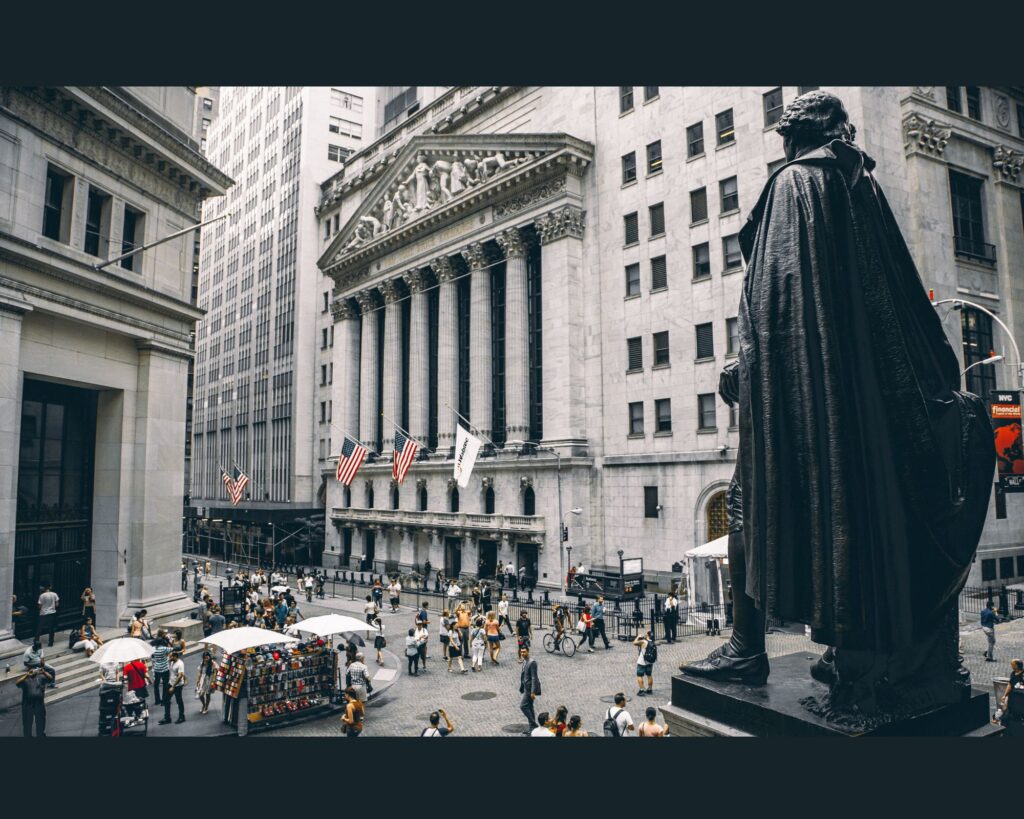
Source: AUN News
Investors on Wall Street are wagering that Federal Reserve policymakers will quickly hike interest rates until the end of the year—and then turn around and start cutting them in six months—as the central bank gets ready to meet this week.
The odd bet, according to economists, indicates investors’ rising concern that the Fed is pushing the economy into a recession as it battles inflation. In addition, it reduces the likelihood of an impending slowdown by limiting longer-term borrowing costs. That gives riskier investments like stocks a boost instead of a more conventional wager where rates wouldn’t boomerang as soon.
Bets mainly determine the yields on US government bonds and the direction short-term interest rates will take in the future. In turn, those establish a ceiling on borrowing costs for the entire economy, with higher yields stifling growth and lower yields fostering it.
Overall, investors’ current projections of the future are helping the fight against inflation more than hurting it. Even though the actual rate controlled by the Fed is now fixed between 1.5 percent and 1.75 percent, Treasurys’ maturity yields in a year are approximately 3 percent due to their holders’ expectation that the Fed would continue raising interest rates this year.
Still, Treasury yields decrease over time when you move from one-year bills to 10-year notes due to bets that the Fed would soon begin lowering rates by the middle of next year. The yield on those was 2.781 percent on Friday, the lowest since May 27.
Interest-rate derivatives, including overnight index swaps, make more precise observations about investors’ thinking.
They demonstrated that investors anticipate the Fed to increase its federal fund’s rate benfund’sk by.75 percentage points on Wednesday as of Friday. Therefore, it is expected that the Fed will increase the fed-funds rate to roughly 3.3 percent by the end of the year. Investors, however, do not anticipate any more gains after that. Additionally, they wager that the Fed will start lowering rates by June, resulting in short-term rates reaching about 2.5 percent by the middle of 2024.
Investors themselves have been astounded by the anticipated policy turn’s acuteness.
From an expectation perspective, it hasn’t been this intense, said
Jim Caron
Morgan Stanley Investment Management’s senior portfolio manager and global fixed income division’s top strategist.
The Fed had historically reduced interest rates within a year of raising them, most recently in 2019 when authorities did so by a quarter percentage point in late July following an increase in December.
However, investors have traditionally been wary about foreseeing such a pivot. When the Fed previously tightened policy at a rate close to what it is doing now, in the middle of the 1990s, it increased rates by three percentage points. However, according to Mr. Caron, who was trading then, investors were prepared for it to go much further.
During that period, the Fed increased rates one last in February 1995 before lowering them in July. However, short-term Treasury yields didn’t indicate that investors were preparing for a cut until May.
The ramifications of the current Treasury yields for investors are unclear. Because they regularly appear just before recessions, so-called inverted yield curves—which work on shorter-term securities and are more significant than yields on longer-term securities—are frequently seen as harmful economic warnings.
However, in some ways, the current yield curve only confirms what investors already know. Furthermore, bets on rate reductions for the following year help lower borrowing rates than they would otherwise be.
Rising Treasury yields have lowered stock prices for most of this year by providing investors with a more desirable, safe alternative. But during the past month, longer-term outcomes have decreased due to growing recession fears, and stock prices have stabilized.
According to many investors, there are solid reasons to wager on an abrupt spike and fall in interest rates. According to the Fed’s most recent economic predictions, rates might increase to about 3.8 percent next year before settling at about 2.5 percent.
Investors have noticed that the economy might deteriorate even quicker than anticipated, such as a significant decrease in home demand and recent weak consumer expenditure data, as the Fed tries to reduce growth. This has strengthened their conviction that rate cuts may also occur sooner than anticipated by the Fed.
Many investors, however, disagree with this consensus. Investors in some situations think the economy is more robust than is generally believed, citing strong consumer balance sheets and ongoing signs of a highly tight job market. Others agree that a recession is coming, but they think inflation will remain high, preventing the Fed from decreasing interest rates.
Senior portfolio manager at Vanguard John Madziyire has favored purchasing five-year bonds since he believes the likelihood of a recession would rise over the following 24 months.
Nevertheless, he has expressed skepticism that rate cuts will occur as rapidly as the market has predicted, partly because the Fed is still anticipating selling bonds acquired as part of its economic stimulus measures, which may conflict with rate cuts.
I want to assume that the market values this, but the reality will likely be very different, he continued. If you don’t think these things can happen, that’s how possibilities start to present themselves, and that’s how you begin to try to make money.
SHARING YOUR VIEWS
Is the Fed controlling inflation effectively enough? If not, why not? Participate in the dialogue below.
Analysis By: Advocacy Unified Network
Copyright ©2022 Dow Jones & Company, Inc. All Rights Reserved. 87990cbe856818d5eddac44c7b1cdeb8
